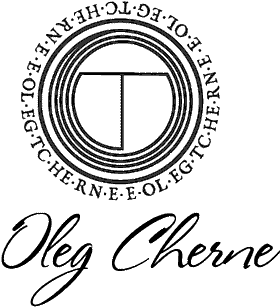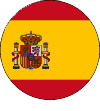The Metaphysics of Wealth. Measure
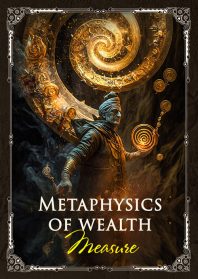
The metaphysics of wealth pertain to the process of advancing towards a matrix that can saturate and fill us. It is the attainment of a flow of connections that leads to the accumulation of our internal and external capabilities. It is also the art of developing integral consciousness, where we start by developing an attitude towards wealth as such, move on to attuning to wealth, organizing our mental circuits, and, ultimately, reach the ability to program our brain.
In other words, the metaphysics of wealth is the process of forming and developing an integral brain, the process of improving one’s nature. It is not the desire and striving for substantial revenue, but rather the art of operating with tasks that we define as wealth, the attainment of a multifaceted perception of wealth as a state that needs to be part of our life.
The metaphysics of wealth require transcending our mental limitations, the uncontrolled stimuli and, most importantly, linear dependencies. It is the art of weighing a triple ounce in your brain and endowing yourself with the ability to, at least, be in the task, and at the most – the ability to solve it. The metaphysics of wealth is a path understood and built through brain analyzers.
Wealth analyzers
1. Visual wealth analyzer
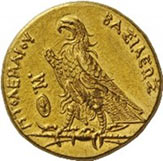
This analyzer is formed by focusing the connections of externally and internally visible mental reactions. The visual analyzer helps one to see and perceive the symbolism of wealth, i.e. helps us to perceive money as amulets.
2. Tactile wealth analyzer
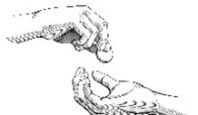
From the perspective of wealth, tactility is the experience and expression of a physical relationship to wealth, of attunement. We are not simply talking about a feeling, sensation of money, but also a feeling for banking, investments, space. It manifests itself through gestures, facial expressions, and our self-expression, i.e. a behavioral function related to wealth.
3. Auditory wealth analyzer
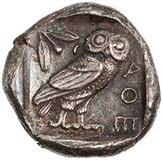
The auditory analyzer refers to the special ability to hear wealth, to hear money. This analyzer is linked to our ability to hear the nature of what is valuable, it is also linked to the reaction of space to it. This is the power of sound and of hearing the cowrie shell.
This shell, belonging to the genus of marine gastropods, was used as a means of payment from Antiquity until the 19th century – first in ancient China, then in India, Korea, Japan, Thailand, the Philippines, Azerbaijan … Traces of such a use have been also found in Africa, Siberia and the territory of Kievan Rus. The culture of using cowrie shells as money was based on the understanding that the ability to hear the right thing is as valuable as an ounce of gold.
Sound is especially important with cowrie shells – they communicate with each other using sounds. In ancient times cowrie shells represented power and status. In ancient China, the shells were called Bao Luo Shu (宝螺属), where bao means jewel.
The cowrie shell had a spiritual power, as its sound connected people with the higher fields. In Hinduism, this shell is considered a symbol of storage and cultivation (yoni), in Sanskrit it was called kauri, or kaudi (कौड़ी), which translates as “coin”, “means of payment”. It is also a symbol of the original sound om (ॐ), which provides the rhythm of the universe with breath, and people with the nature of the spirit.

The ancient Greeks depicted this sound in the form of owls. They perceived the hooting of an owl as a symbol of penetration into space. In addition, the owl was a symbol of the goddess Athena, personifying wisdom. Encountering such a coin was associated with the reasonable use of wealth. The Romans drew an owl at the feet of Minerva, the goddess of wisdom. The owl was also considered the keeper of savings.
4. Vestibular Wealth Analyzer
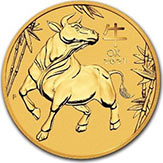
The vestibular wealth analyzer is part of the inner ear, the sound of the inner voice. It is associated with foreboding, insight, and direction. It is most developed in players who get their fill through money games – if they have developed this analyzer, then they have also developed their ability to raise the stakes. This state is symbolized by the bull.
In addition, the development of the ability to perceive the sound and frequency of wealth forms a connection with the higher fields. If we do not hear this connection, our wealth would connect us with lower properties.
5. Olfactory wealth analyzer
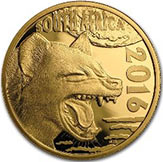
This most important wealth analyzer is associated with a developed sense of smell. When someone says “money has no smell”, this actually indicates an underdeveloped olfactory wealth analyzer. The ability to “keep your nose in the wind” can serve as a permit into the world of wealth and money. Wealth is linked to the process of constantly growing and filling oneself. This means you need to follow a kind of breathing path. Wealth has its own vipassana – it keeps the consciousness in a state of ‘clear mind’.
The olfactory analyzer is an entrance ticket to space, a kind of tessera (a Roman token that was used as a ticket). Moreover, this can be both an entry into the space of directed receiving, or into the space of “bread and circuses”, or rapid, brain-destroying breathing.
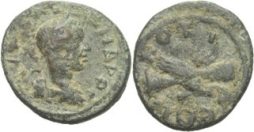
The concept of measurability and sufficiency is based on the idea of balance, equilibrium, which is associated with calm breathing. This paves the way to the accuracy, measurability, and dimensionality of money. That is, it leads to the ability to keep our attention on the goal. Thus, the measure of proportionality follows the concept of measuring grain, which is a symbol of the process of generating. The very measurement unit gran (from ‘grain’ in English) was based on the barley grain.
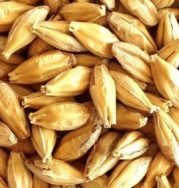
The ancient texts mention the concept of “an ounce of breath” (or, according to Aristotle, the concept of the ability to maintain the rhythm of breathing). The ability to keep calm, to not worry, made it possible to master the frequency of a troy ounce, which from the standpoint of metaphysics means the ability to understand the dimensions of wealth.
Even though the ounce is a unit of mass, force, and monetary units, we can say that it is also the weight of the calm breath, equal to 31.1034768 grams, or 480 grains. Or a sip of breath, the fluid ounce (fl oz, imperial unit of volume), which has a volume of 28.413063 ml and is 1/20 of an imperial pint. The conceptualization of breathing as a process of liberation and enrichment is linked to the integral field we inhale from. Thus, each sip of breath equals 30 degrees. Breathing in a troy ounce means getting rich. In general, the understanding of the nature of wealth among different peoples depended on the adjustment to a certain rhythm of existence. Attunement is the basis of breathing.
The concept of “troy ounce” in the system of weight measures comes from the perception of three-dimensional space. In ancient times, a three-dimensional unit was a commodity, and money itself was also a commodity valued according to its actual weight. This was also the measure of filling, or the measure of bread as the primary source of wealth.
So, the troy ounce and the troy pound were also a measure of the weight of bread and were used in weighing grain. Thus, “weight coins” were formed, which could conditionally be determined by eye, taste and smell. This is understandable – the smell of warm bread had a strong effect on human nature.
A troy ounce equals a handful of barley. 49 grains of barley from the center of an ear weigh as much as a penny coin, and a few pennies weigh as much as an ounce. Interestingly enough, the weight coin had the aroma of malt.
The olfactory aspect can also help us understand the emergence of more modern enrichment strategies associated with the American platinum “eagles” (a coin containing one troy ounce of pure platinum), the South African krugerrands (gold South African coin), the British sovereigns (note that the very word ‘sovereign’ means ‘ruler’) and the Canadian maple leaves. All of these coins contain an exact amount of the precious metal.
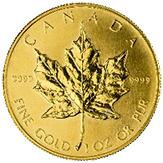
The term avoirdupois comes from the French language and is used in relation to goods sold by weight (avoir du pois – having weight, French). There are 16 ounces of avoirdupois in a pound of avoirdupois.
6. Visceroceptive wealth analyzer
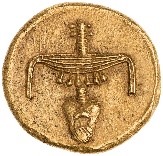
The visceroceptive analyzer is perhaps the most mysterious. On the one hand, it is connected with internal receptors, and on the other hand, with the nature of our spirit. It refers to the process of internally assessing the state of our body. This is the most ancient analyzer, as it was defined in ancient Egypt in relation to Egyptian mythology. It is associated with the ancient Egyptian concept of the souls that can bring you wealth, stability and greatness.
We can use the visceroceptive analyzer only if we are constantly involved in the tasks, where wealth and money are associated with the spiritual process.
Disruptions in this analyzer lead to spiritual disruptions, including the desire for usury, a lust for wealth, as well as idleness. This state reflects the notion of “greed”, which enslaves the minds of people who begin to believe that everything can be bought and sold. As a result, the spirit is deprived of the ability to get nourished by light, which was the foundation of life for the ancient people. This idea is exemplified in the culture of the Mesoamerican Indians. Meanwhile, the conquistadors, who used gold for other purposes, became the image of the thirst for profit. As a result, everything began to have a selling value, including gold.
The symbol of this state is the “the worship of the golden calf” image.
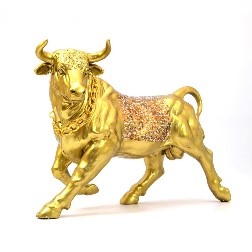
Thus, life was divided into the art of overcoming and gaining and the desire to simply take. And the desire for the rays of light, the rays of the Sun, and, in fact, for the illumination of light associated with gold, was replaced by dependence on another analyzer – the tactility of gold. And the spiritual value was replaced by the material.
7. Taste wealth analyzer
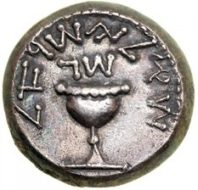
The taste analyzer of wealth is closely related to the olfactory one, and vice versa. They could even be examined together if it were not for the visceroceptive analyzer, which can be distorted primarily due to the taste analyzer. In ancient times this was the basis of the “bite down on it” method. That is, since the quality of the products was important, and not only the weight, value was determined not only by weight and quantity, but also by taste.
So, the shekel (sickle), which appeared long before the minting of coins in Mesopotamia around 3000 BCE, was a unit of measure not only for weight, but also for taste. The term she (or sheum) also referred to the taste of barley, and not just its weight. So, the weight of the grain was approximately 0.046 g, and the perception of the taste of the grain was determined by the internal receptors (which today refers to the concept of tasting). If we were to introduce grain measurements today in terms of taste, then we would need to use the tasting principles that divide malt into pilsner, British pale, American pale, Viennese and Munich flavors.
So, the way to try coins by biting down on them provides, first of all, an understanding of the tactility of the coin. And tactility is already taste. It’s like the difference between toffee and lollipop or wool socks and synthetic ones.
8. Motor wealth analyzer
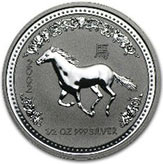
The motor analyzer is associated primarily with the transfer of wealth, the ability to manage it. In ancient times, material wealth was that which light could illuminate. It helped with self-evaluation, experiencing one’s nature and nourishing it, it was the basis of self-awareness. However, only people of a certain status could use this wealth: priests, pharaohs, kings, people who either lived according to the laws of the inner spirit, or carried it by birth. And this was not something that could be sold.
This is linked to the movement of light. Initially, gold had a sacred, magical meaning, and it directed people’s attention (and consequently movement) to their connection with higher powers. When the pharaoh put his seal on the ingots, he realized not only his will, given to him by the gods, but also allowed the circulation of this golden currency and the movement of wealth. Common people, on the other hand, used barter. Yet the part of society regulating the relationship of people with wealth, following the example of custodians and bankers, interacted with power, although it did not have the right to wear gold jewelry. However, when translated into monetary terms, spiritual principles changed to material ones.

nevertheless, since jewels were important for transferring energy, consciousness was faced with the task of interacting with wealth according to the laws of the motor analyzer. This is confirmed by the the fact that many coins bear of the image of a moving animal.
The characteristics of the motor analyzer have a modern manifestation – cryptocurrency. What is tricky about the movement of this type of currency is that we need to change the characteristics of the motor analyzer in ourselves. Cryptocurrency has no physical representation, which makes the question of its energy very interesting. Since cryptocurrency works according to the scheme of built-up chains, in order to really interact with it, we need to form a different mindset and, actually, build an internal neural network, where the neurons would reflect the bitcoin or cryptocurrency principle.

So, from the perspective of brain development, this type of transfer of funds is useful. Otherwise, we become part of someone else’s chains. It is important for the brain to master its internal peering in order to have its own personal understanding of this type of movement of wealth.
